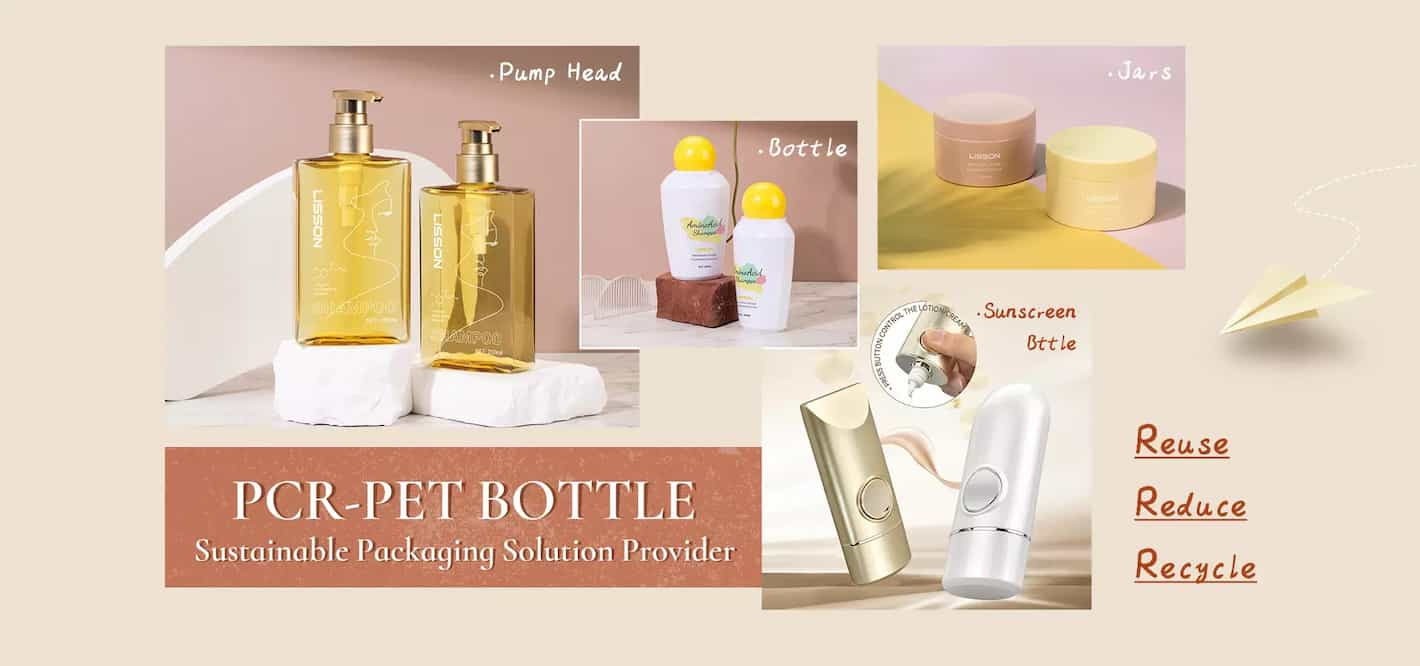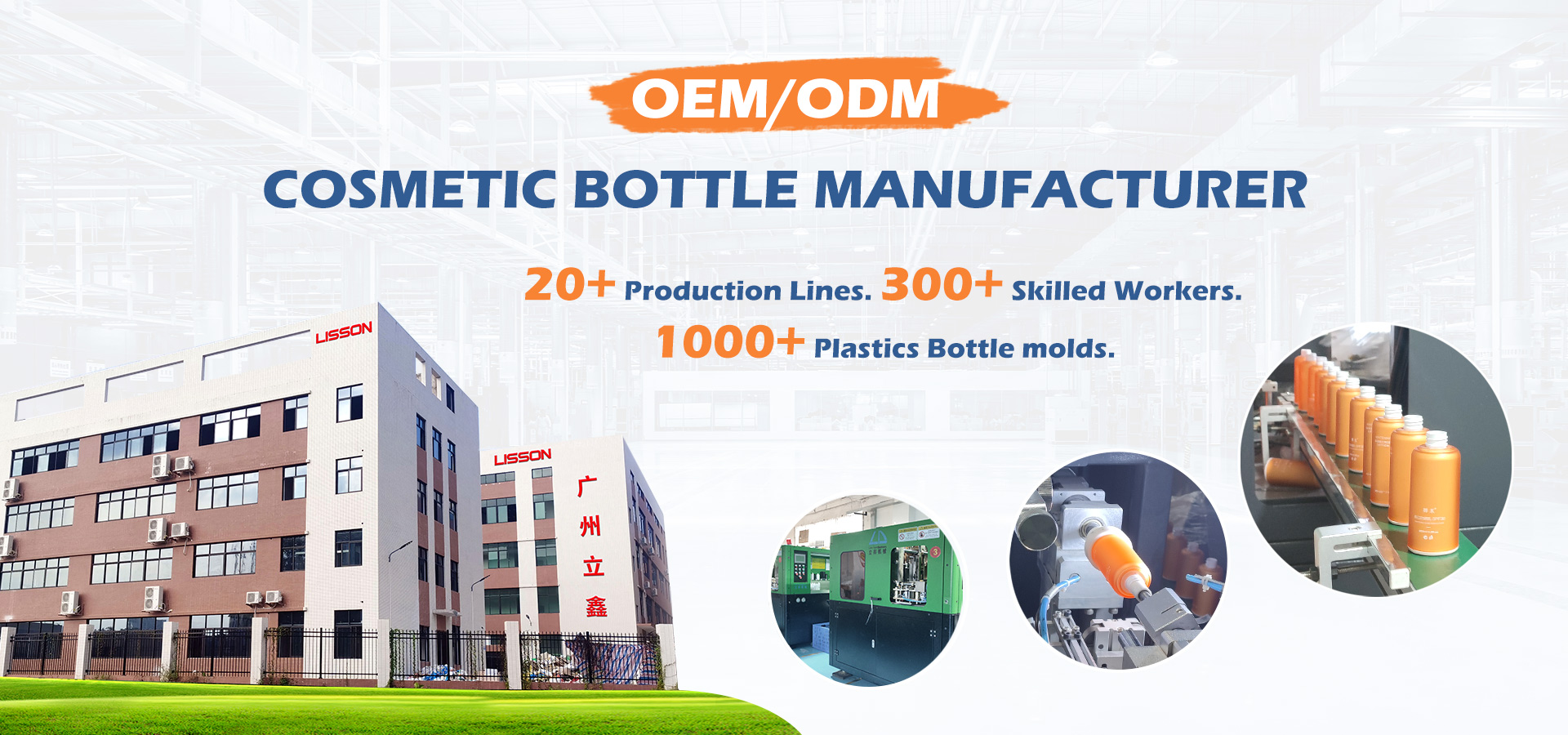Cosmetic bottles are essential for packaging a wide range of beauty and personal care products, from lotions and creams to perfumes and serums. The manufacturing process for these cosmetic bottles is a sophisticated operation that combines precision, aesthetics, and functionality. This process not only ensures that the bottles are attractive and consistent with a brand's identity but also guarantees that they protect and preserve the products inside. Below is an in-depth look at the various stages involved in the cosmetic bottle manufacturing process.

The first step in manufacturing cosmetic bottles involves choosing the appropriate material. The most commonly used materials include:
Plastic (PET, HDPE, PP): Plastic is lightweight, durable, and versatile, making it the most popular choice for cosmetic bottles. PET (polyethylene terephthalate) is particularly favored for its clarity and recyclability.
Glass: Glass bottles are often used for premium cosmetics, perfumes, and skincare products. They offer an elegant appearance, excellent barrier properties, and recyclability.
Aluminum: Aluminum bottles provide a sleek, modern look and are ideal for products requiring a high level of protection from light and air.
Sugarcane Bioplastic: This sustainable material is derived from sugarcane and offers an eco-friendly alternative to traditional plastics.
The choice of material depends on factors such as the product's chemical composition, shelf life requirements, brand identity, and environmental considerations.
Once the material is selected, the next step is designing the bottle. This involves creating a design that aligns with the brand's image and meets functional requirements.
3D Modeling: Designers use CAD (Computer-Aided Design) software to create a 3D model of the bottle. This model includes all the details, such as shape, size, and the location of the neck or dispensing mechanism.
Prototyping: A prototype of the bottle is created, often using 3D printing or other rapid prototyping techniques. This prototype allows designers to assess the bottle's aesthetics and functionality before moving to mass production.

The molding process is where the actual bottle is formed from the chosen material. There are different molding techniques depending on the material:
Injection: In this process, plastic granules are heated until they melt. The molten plastic is then injected into a mold that has the shape of the bottle.
Cooling: Once the plastic fills the mold, it is allowed to cool and solidify. The mold is then opened, and the newly formed bottle is ejected.
Extrusion: In blow molding, a tube of molten plastic (or glass) called a "parison" is extruded.
Blowing: The parison is then placed in a mold, and compressed air is blown into it, forcing the material to expand and take the shape of the mold.
Cooling and Ejection: The bottle is cooled inside the mold, after which it is ejected. This process is especially common for creating hollow bottles with uniform wall thickness.
Preform Production: In this process, a preform is first created using injection molding. The preform resembles a small test tube with the neck of the bottle already formed.
Stretching and Blowing: The preform is heated and then stretched and blown into a bottle shape using a blow mold. This method is commonly used for producing PET bottles.
After molding, the bottles undergo surface treatments and decoration to enhance their appearance and align them with the brand's design.
Surface Treatment: Depending on the material, bottles may undergo surface treatments such as polishing, sandblasting, or coating to achieve the desired texture or finish.
Decoration: Bottles can be decorated through various techniques, including:
Screen Printing: Applying ink directly onto the bottle's surface to create logos, text, or designs.
Hot Stamping: Using heat and pressure to transfer a metallic or colored foil onto the bottle's surface.
Labeling: Applying adhesive labels that feature the product's branding and information.
Embossing/Debossing: Creating raised or recessed designs on the bottle's surface for a tactile effect.
Spray Coating: Applying a thin layer of color or protective coating to the bottle.
If the bottle design includes multiple components, such as a cap, pump, or sprayer, these parts are assembled in this stage.
Capping: The bottle is fitted with a cap, which could be a screw cap, flip-top, or pump, depending on the product's requirements.
Inserting Dispensing Mechanisms: For products that require precise application, such as lotions or serums, a pump or sprayer may be attached to the bottle. This component must be carefully aligned and tested for functionality.
Quality control is a critical stage in the manufacturing process to ensure that each bottle meets the required standards for functionality, appearance, and durability.
Inspection: Each batch of bottles is inspected for defects such as irregular shapes, discoloration, or faulty printing.
Testing: Bottles may undergo various tests to check their strength, leak resistance, and compatibility with the product they will contain.
Certification: If the bottles are used for specific applications, such as pharmaceuticals or food products, they may need to meet regulatory standards and certifications.
Once the bottles pass quality control, they are packaged for distribution.
Packaging: The bottles are carefully packed to prevent damage during transportation. Packaging can be customized to protect the bottles and align with the brand's image.
Distribution: The finished bottles are then shipped to cosmetic companies, where they will be filled with the product and prepared for sale.
The cosmetic bottle manufacturing process is a blend of artistry and precision engineering. From selecting the right materials to designing, molding, and decorating, every step is crucial in producing a bottle that not only protects and preserves the product but also enhances the consumer's experience. With advancements in technology and an increasing focus on sustainability, the process continues to evolve, offering innovative solutions for the cosmetic industry.
Copyright © 2025 Guangzhou Lisson® Plastic Co.Ltd | All Rights Reserved.
Hello, please leave your name and email here before chat online so that we won't miss your message and contact you smoothly.